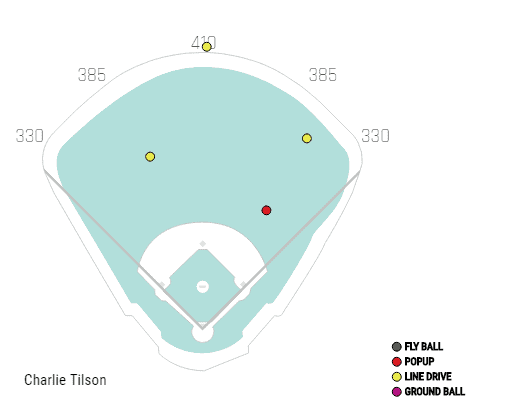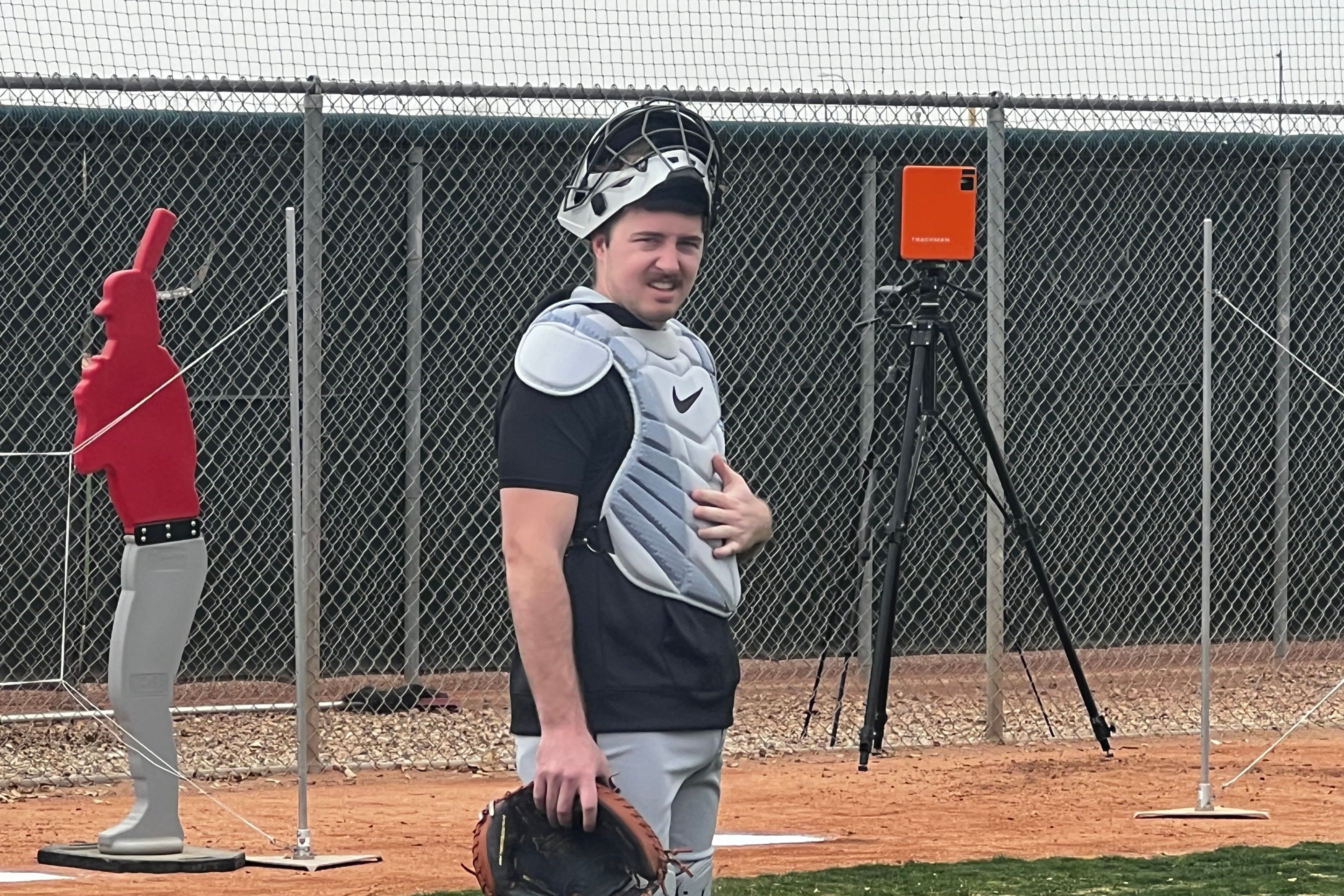Nine games into his second chance at extended playing time with the White Sox, Ryan Cordell carried a .381/.409/.762 line with two homers and two doubles, and without a worrisome amount of strikeouts.
It's been a slow slide to .250 since then as the strikeouts piled up. His plate discipline is decent, but he still looks like he gets caught in between and swings through both fastballs and changeups. Rick Renteria is playing him most days to see whether he can dust himself off, and Cordell has responded with three hits and no strikeouts over his last two starts. It's going to be a battle, but Cordell had some selling points before a couple of serious injuries -- fractured vertebra, then clavicle -- and it's worth seeing if he can get back there.
You can basically take Cordell's track and apply it to Charlie Tilson. Just like Cordell, he was worthy of an audition when the White Sox acquired him, but then his hamstring rolled up on him like a treasure map, and then he battled a stress reaction in his ankle while trying to get back into regular action.
And just like Cordell, his second attempt at claiming a regular job is going better than his first. Tilson is 3-for-7 with a double, a walk and three strikeouts over two starts against Cleveland, and his legs are getting into the action, too. He's scored two runs, he's stolen a base, and he made a fine diving catch in left after kinda embarrassing himself out there last year.
If a psychiatrist put me through a word-association exercise with Tilson before this season, I'd probably come up with:
- His hamstring explosion in Comerica Park's outfield.
- The fly ball he thought he caught, only to be hilariously mistaken.
- Not being able to lift the ball.
Then I'd ask her if we could talk about something else.
But that last one is key -- between Charlotte and Chicago, he hit about two-thirds of his batted balls on the ground.
Smash-cut to Monday and Tuesday, and hey now:
This is fun, and more importantly, it's different. Tilson's performance at Charlotte before his promotion -- .333/.396/.475 -- also qualified as "fun and different," although his 58 percent ground-ball rate suggests he didn't exactly transform his bat into a mortar. It is 10 percent better than what he was doing before, and more in line with how he looked in St. Louis' system before the White Sox acquired him for Zach Duke in 2016.
The White Sox acquired that version of Tilson with the hope that he could serve as an on-base guy who could handle center, even if he didn't excel there. Nearly three years and two major leg injuries later, a capable center field is probably out of reach for him, but the Sox still need players who aren't so easy to get out, so here he is.
If his legs can't quite help him in center, they might still be able to help him at the plate. James Fegan wrote about Tilson, who credited Charlotte hitting coach Frank Menechino with helping him remember how to use his base again:
“I’m getting loaded and using my lower half,” said Tilson. “I think that would be my biggest key. The ability to stay on the fastball has been a big difference maker for me. That’s where I really struggled last year. I was late on the heater and falling back in counts and not being able to take advantage in hitters’ counts. I think getting back on the fastball has really helped me be more productive at the plate.”
There are enough legitimate reasons to think we haven't seen the real Tilson the last two seasons to give him a clear-eyed chance this time around. Like Cordell, any hot start could gradually erode to replacement level, but until Jon Jay comes back, he's the best use of those at-bats against right-handed pitching. The hope is that Tilson continues to square up MLB pitching without swinging outside himself, making him the best use of those plate appearances well after Jay returns, assuming Jay ever does.







